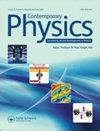宇宙类比:自然系统如何模拟宇宙
IF 3.3
4区 物理与天体物理
Q2 PHYSICS, MULTIDISCIPLINARY
引用次数: 1
摘要
纳米材料,并使用计算建模来收集纳米氧化物材料的微观信息。书中每一章的讨论都揭示了一件令人惊奇的事情,那就是当金属氧化物转变为纳米材料时,当它改变性质或不寻常的晶体结构时,会发现新的性质,从而产生惊人的功能。合成的金属氧化物有时有一些缺点,如材料在经历相变时缺乏稳定性。因此,研究人员决定将金属氧化物与碳纳米管(CNT)结合,采用混合系统设计来生产可控的纳米结构。第7章到第13章也给我们留下了深刻的印象,因为他们展示了纳米材料在生活中的各种应用,比如去除NO(氮氧化物)、净化空气和水、减少二氧化碳、光电化学燃料生产、电化学能量储存和气体传感。它揭示了纳米材料是使这个世界变得更美好的伟大发现之一。这本关于纳米材料及其应用基础的完整而复杂的材料对读者来说是非常有用的阅读资源。这本书的序言向我们介绍了整本书的内容以及包含的主要特征。因此,在阅读整本书之前,读者可以很容易地找到讨论的主题。我们喜欢这本书的部分是,每一章总是以介绍开始,提到存在的现象和问题,让读者可以直接找到研究和使用纳米材料的原因。从以前的研究到最近的研究也在每章中解释,以便读者清楚地了解纳米材料的合成,方法和应用方面的改进。有兴趣将其发展得更好的研究人员将能够清楚地了解以前研究的缺点,并了解这种纳米材料的哪些方面需要改进。这本书给我们留下了深刻的印象,因为它的材料以清晰、详细和结构良好的方式呈现。每个作者如何解释纳米材料的合成、方法和应用是非常容易理解的。每一章还提供曲线,图形,图片和表格,可以帮助读者理解已经完成的研究结果。然而,不幸的是,对于普通读者或非专业读者来说,很难理解这些图片加上物理和化学领域中常用的许多术语。我们强烈推荐这本书作为学生在高级本科和研究生水平的最佳资源,特别是在与物理,化学,自然科学和环境发展相关的领域,以及对纳米材料研究,环境研究,化学物理或类似感兴趣的研究人员。作者通过精辟的解释,成功地呈现了这本全面的书。我们相信,这本书将得到充分的考虑,作为他们的最终资源,在预期的读者。然而,没有基础科学知识的人可能很难理解这本书。致谢本文章由计算机程序翻译,如有差异,请以英文原文为准。
Cosmic analogies: How natural systems emulate the universe
nanomaterials, and the use of computational modeling to collect microscopic information of nano-oxide materials. The amazing thing revealed in the discussion in each chapter of the book is the discovery of new properties frommetal oxides when they turn into nanomaterials as it changes in properties or unusual crystal structures that produce amazing functions. Synthesized metal oxides sometimes have some drawbacks such as the lack of stability of a material when it undergoes a phase transition. So research emerged that then decided to couple metal oxides with carbon nanotubes (CNT) with a hybrid system design to produce controlled nanostructures. Chapters 7 to 13 also impressed us because they presented various applications of nanomaterials in life, such as for NO (Nitrogen Oxides) removal, air and water cleaning, CO2 reduction, photoelectrochemical fuel production, electrochemical energy storage, and gas-sensing. It reveals that nanomaterial is one of the great discoveries to make this world better. This complete and complex material on the basics of nanomaterials and their applications can be a very useful reading resource for readers. The preface of this book presents us with an overview of the contents of the entire book as well as the key features contained. Hence, readers can easily find out the topic of discussion before reading the entire book. The part that we like about this book is that each chapter always begins with an introduction by mentioning existing phenomena and problems so that readers can find out firsthand the reasons for studying and using nanomaterials. Research from previous to recent research is also explained in each chapter so that readers get clear information about improvements in the synthesis, methods, and application of nanomaterials from time to time. Researchers who are interested in developing it for the better will be able to get a clear picture of the shortcomings of previous research and get an idea of which aspects of this nanomaterial need improvement. We are very impressed with this book because the material is presented in a clear, detailed, and well-structured manner. How each author explains the synthesis, method, and application of nanomaterials is very easy to understand. Each chapter also presents curves, graphs, pictures, and tables that can help readers understand the results of the research that has been done. However, unfortunately, for general readers or non-expert readers, it will be difficult to understand the pictures coupledwith themany terms commonly used in the fields of physics and chemistry. We strongly recommend this book as the best resource for students at the advanced undergraduate and graduate level, specifically in fields related to physics, chemistry, natural science, and environmental development, as well as researchers who have an interest in nanomaterial research, environmental research, chemical-physics, or similar. The authors have successfully presented this comprehensive book through their great explanation. We are convinced that this book will get full consideration as their ultimate resource among the intended readers. Nonetheless, someone who does not have the basic science knowledge may be quite hard-pushed to understand this book. Acknowledgements
求助全文
通过发布文献求助,成功后即可免费获取论文全文。
去求助
来源期刊

Contemporary Physics
物理-物理:综合
CiteScore
2.90
自引率
5.00%
发文量
18
审稿时长
>12 weeks
期刊介绍:
Contemporary Physics presents authoritative and lucid introductory review articles on important recent developments in physics. The articles are specially commissioned from experts in their field. The authors aim to review comprehensively the current state of their subject and place it within a broader context of contemporary research, industrial possibilities and applications in an accessible way.
The Journal is of particular use to undergraduates, teachers and lecturers and those starting postgraduate studies who wish to be introduced to a new area. Readers should be able to understand the review without reference to other material, although authors provide a full set of references so that those who wish to explore further can do so. The reviews can also be profitably read by all those who wish to keep abreast of the fields outside their own, or who need an accessible introduction to a new area.
Articles are written for a wide range of readers, whether they be physicists, physical scientists or engineers employed in higher education, teaching, industry or government.
Contemporary Physics also contains a major section devoted to standard book reviews and essay reviews which review books in the context of the general aspects of a field.
 求助内容:
求助内容: 应助结果提醒方式:
应助结果提醒方式:


